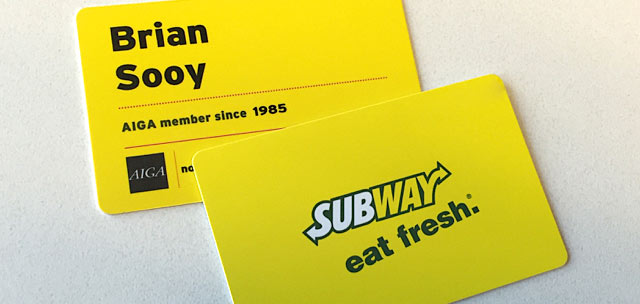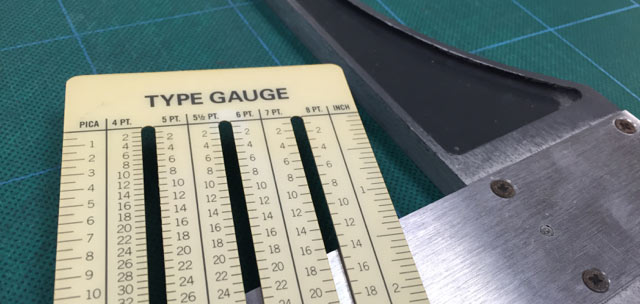Were you practicing design 30 years ago?
30 years ago, designers measured type with a type gauge. We drew circles with a circle guide, and wielded t-squares to create straight lines. We ordered headline type from Phil’s Photo, and had to send film out to be developed before we could see a contact sheet.
We visualized on tracing and layout paper instead of pushing pixels; photos were scanned by the printer; we ordered galleys from the typesetting bureau and used wax or rubber cement to adhere them to art boards we created using non-photo blue pens and Rapidographs.
Rapidographs. Pens that were guaranteed to be clogged whenever you needed to use them, or become clogged in their use.
If it sounds positively primitive, it was. Were some of us affected by the chemicals in the rubber cement? Perhaps. Was it exciting? Of course. Was it exciting because of the effects of the chemicals? I can’t remember.
30 years is long enough to pay off a mortgage. 30 years is how long I’ve been married, and as long as I’ve been a practicing designer. You may be a reader who is (not yet) 30 years old.
30 years is how long I’ve been an AIGA Cleveland member. Back then, members received a membership certificate emblazoned with a gold hot stamped AIGA Medal, signed by the current president. Now you get a shiny membership card and a variable-data imprinted letter printed on laser compatible generic card stock.

I have noticed that my AIGA membership card is nearly the same color as a Subway gift card, similar to Pantone Yellow. I may have tried to buy a sandwich with my AIGA card; next I’ll try to gain entrance to an AIGA event with my Subway card.
30 years ago, AIGA was an acronym for the American Institute of Graphic Arts. Now it’s AIGA, the professional association for design. (It’s taken AIGA a few years to figure out what it needs to be).
The chapter was founded by Cleveland resident Bert Benkendorf, who at that time was design director of Edward Howard & Co. (I called Bert earlier this summer. He and his wife live in Beachwood, read a lot, and are in their 90s).
Let me digress. Do you remember what happened in 1984? OK, are you aware of what happened in 1984? (Sorry, I forgot—some of you weren’t born yet.)
Yes, it was the year I graduated from the BGSU School of Art. The program included a total of five design classes. I had enough fine art credits that I should have declared a minor in painting.
1984 was also the year the Macintosh was introduced. This event was almost as significant as my graduation, according to my parents. Shortly after graduation, as a designer in my first post-college job, into my wood-panel lined office at the book publishing firm at which I worked was rolled a Macintosh 512K.
I’ll translate. 512K stands for 512K of RAM. You had more memory in your classic Second-Generation iPod. I did warn you I was going to digress… I was talking about AIGA Cleveland.
In 1985, the chapter’s finances were run out of a personal checkbook. I was elected to be the treasurer, and moved AIGA CLE into Quickbooks and a commercial checking account. As exciting as that may seem to none but your accountant, it was intended to be able to track event and operational expenses more closely, as AIGA Cleveland (and AIGA Philadelphia) always seemed to be in a tug-of-war with National over what share of membership dues we received.
In 1998, I was invited to work with AIGA National on their first web site. The lead firm on the project was cleverly named innov8 or something like that, their idea was to give the site visitor a choice of interface design that would be overlaid on the content. It seemed like a good idea at the time. In 1996, AIGA Cleveland registered the domain name aigacleveland.org.
We’ve had an ongoing conversation for 30 years as to whether AIGA National was relevant to members of AIGA Cleveland. At times, the initiatives that AIGA National focused upon seemed distant from what concerned designers in Cleveland. There was, and remains, a distinct difference between the design culture and design economy in New York (and Chicago and the West Coast). As with many national organizations with regional chapters, it’s critical for regional leadership to localize the approach to programming, while acknowledging the advocacy initiatives and sponsorship opportunities from which members benefit. AIGA Cleveland leadership has been remarkably consistent over 30 years at attracting highly regarded designers and professionals from related fields to inspire us.
In 1995, I was asked to create a piece for Matthew Carter’s visit, pairing photos from Barney Taxel with Carter’s iconic typefaces. Of course, you’re all familiar with Matthew Carter, type designer? Look him up on Wikipedia… He designed Bell Centennial, the typeface used in phone books. Phone books? OK, never mind.

With the recent visit from Christian Schwartz, AIGA has invited a type designer about once every five years, including Erik Spiekermann, Matthew Carter, Jim Parkinson, and Doyald Young. In between we’ve been visited by designers who use the type these giants create; a design circle of life.
AIGA introduced me to David C. Baker (business consultant and principal of Recourses); the late Doyald Young (type designer, lettering artist, and author); Marty Neumeier (The Brand Gap and The Brand Flip); and type designer Jim Parkinson. All are colleagues; some continue to be mentors and friends, all have influenced my work.
All this reminiscing makes me think of you. 30 years from now, your interests, your opportunities, your skills will have changed. You’ll go through phases in your career (you may even change careers; but once a designer, always a designer).
Consider my path: Junior designer to designer to art director; lettering artist to creative director; part-time professional (at a local greeting card company) to design firm principal. From type designer to strategist to author, and still a designer). Each path you walk is part of the long journey of a life of design.
It’s not what you do; it’s how you think. Technology changes, styles evolve. What you created yesterday is now an artifact of art history. The world will always have a need for design thinking and problem solving.
None of us get from there to here without emulating those whose work and thinking we admire; nor can we escape the influence of those who laid the foundation of process, aesthetic, and technology upon which we build.
Even if you’re reading this article 30 years from now, AIGA will play a role in your journey.
Once a designer, always a designer.